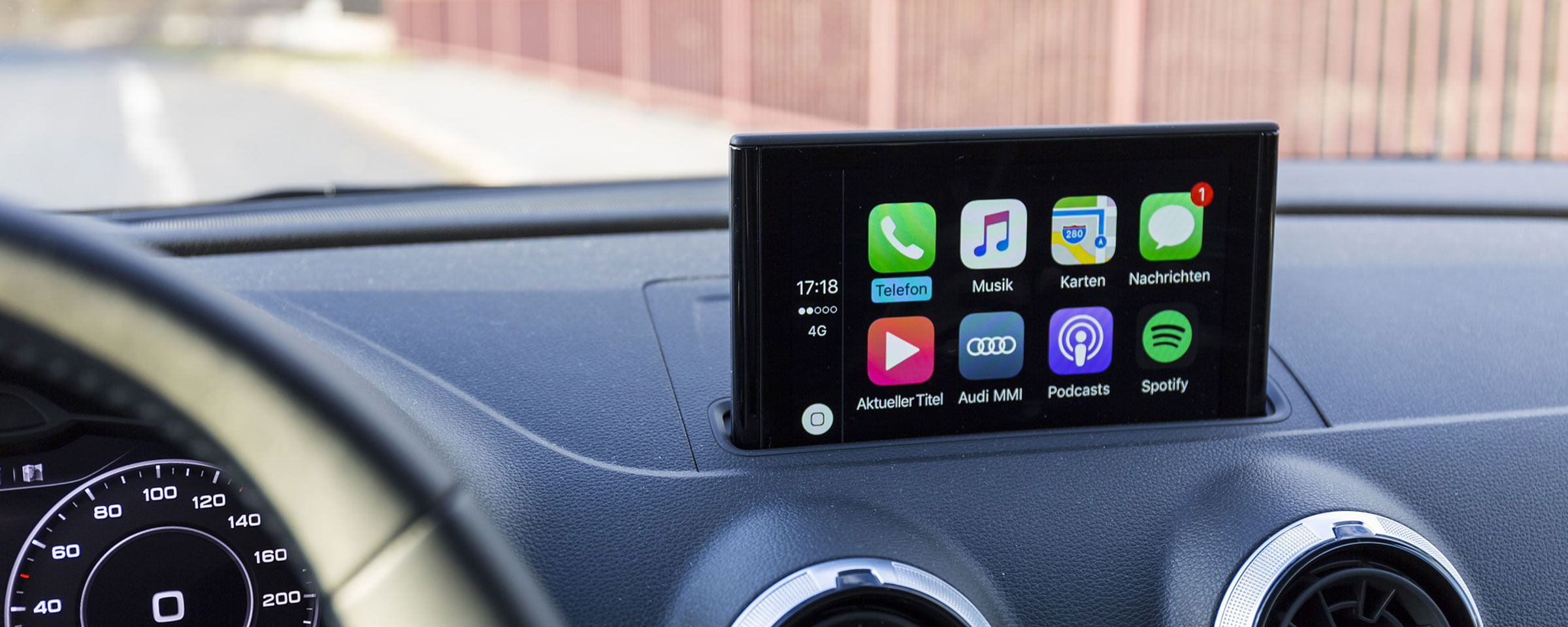
 Markus Turber
Markus Turber

02.09.2014
From pull to push: Why Apple CarPlay and Android Auto drive automotive User Experience to a new level
For a first round, we decided to investigate the impact of Apple CarPlay and Android Auto, as we estimated it would provide us a lightweight start into the discussion circle and provide a smooth warm-up. And indeed, looking from an User Experience and User Interface perspective there were no big controversies – at least not in this round.
The integration of cars and traffic into the internet of things and services is removing a major hurdle
This headline was the thesis where controversies boiled hot in our discussion circle. On the one hand, there is nothing new about Apple CarPlay or Android Auto – just a little more connectivity with the car. A display, some better access to audio, telephone, etc – even through the car’s own jog dial. Yes, it is a very trivial step. In fact, one could have just stuck their smartphone to the windshield and use it while driving – However: The difference is the presence of the ecosystem. We are now switching from pull to push.
Here’s an example …
Hugo is on the road and badly in need for some gas. Searching for the cheapest gas station today means that he has to pull his phone out of the pocket. He has to unlock it and swipe to find the right app. Open it, wait for the GPS to determine his current position – just to receive a list of near-by gas stations. The first list entry might be a good tradeoff to be close and cheap, but could it be on his route to the desired destination as well? Not very likely. After finding the best option from the list, he has to add a stopover to his car’s own navigation system and wait for the calculation.
This is pull on demand and manual reconfiguration of semi-automated processes. Poor User Experience – neither very convenient nor smart!
Now we move to push!
Shouldn’t it be like this? All relevant services (like the gas station finder) become active once Hugo starts his car. Some of them even before that. The apps are monitoring the situation and context in the background. When a relevant use case occurs, the corresponding app knows about it and jumps right in. In our case this might be the fuel gauge entering the lower quarter. As the car, routing algorithms, and the service app are now talking with each other, his car now pro-actively suggest Hugo well evaluated offers, giving him the option for a fast, a cheap or the most comfortable way to refill.
A platform for attention
Car manufacturers are opening their stage to new actors, providing them millions of hours of attendance during our all driving time. This stage will hopefully open to a wide range of service designers and developers. If this is happening, people with great service ideas do not longer have to convince the car manufacturers (OEMs), as they have direct access to their potential customers via the app markets. We predict an innovation rally as this broadens the market of location-based-services to routing-based and destination-based ideas. For those who are not comfortable with the idea of every service being able to enter the automotive stage – please imagine a car radio which only plays the OEMs own radio station.
A new breed of intelligent and personal mobility services
As we see in the fuel scenario, there is some potential in the connectivity with information on CAN (the vehicle’s micro controller bus) and MOST the cars internal system for media information (you can get an impression on the possibilities watching the Mercedes IAA show car, or the Smart Car Portal) Millions of connected cars mean the collection of massive mobility data for those having attractive apps in the field. In combination with intelligent algorithms this will jumpstart a new breed of intelligent personal telematic services – moovel, Uber and Qixxit are predecessors of them.
The OEMs are loosing control. Bad? Not at all…
A huge step towards innovation. By implementing Apple CarPlay or Android Auto automotive OEM lose the exclusive control over large parts of the user experience of their navitainment systems. But is this bad news? Not at all. On the one hand, OEM will still provide their original brand app to the concert. And on the other hand there will be still fallback systems provided by the car in case you don’t plug your phone or if there is bad connectivity to cloud based services (which we expect to rise).
- Quick update cycles
For designers of automotive onboard systems, this is a big step. By provisioning onboard software via the mobile phones established distribution channels services can be developed, released and updated like every other app – not longer stuck to automotive hardwares development cycles, which take significantly longer. - In-market updates
User Interfaces (MMIs) and services improvement enrich the user experience of sold cars in the market - Automotive and mobile developers at eye level
The new drivers of the process have bits and bytes in their vessels instead of petrol. - Freedom of choice
The car owner can decide for a mobile operating system independently of his car brand. We are sure a lot of digital natives will appreciate this, as the seamless integration of mobility into their digital being is becoming a major issue for them. - Connecting different worlds
The ecosystem of phones extends mobility issues. The phone is the most integral part of various parts of our lives. Now we can add the dots and arrows between different worlds to come up with real integrated digital mobility services.
Conclusion
Apple CarPlay and Android Auto is neither a big invention nor a technological milestone. But it is a huge step towards innovation – making the car an integral part of the internet of things and services. No question, the car has a very attractive spot within the Internet of Things (IoT). However, it’s important to realise that the number of cars, which will join the internet of things, is fairly small compared to the 30 billion connected devices estimated for 2020. In other words: the Iot is not joining the car world – the car is joining the IoT party! Services from many other different sectors will massively interact with mobility and enrich the ecosystem.
We are expecting an exciting innovation rally for car manufacturers, service designers and developers, boosting the user experience of cars to a new level.